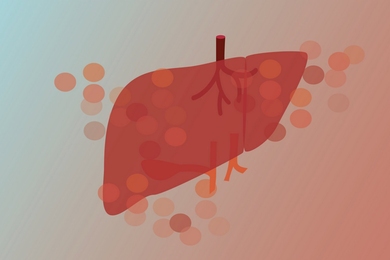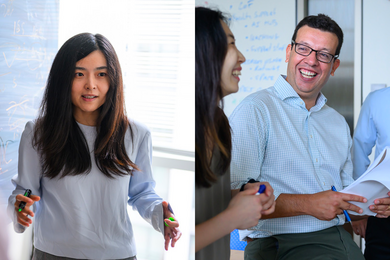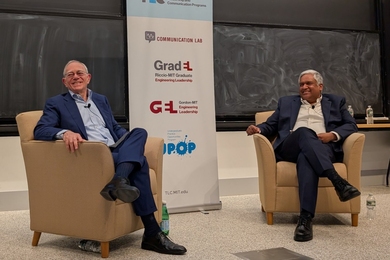When it was first introduced in the late 1980s, gene therapy -- treating diseases by gene repair -- was touted as the next big promise for relieving human suffering. But today, 10 years and 200 clinical trials later, the technology is caught in a bottleneck, caused by lack of effective ways to deliver the therapeutic genes into patient cells.
However, contrary to some news reports, researchers are far from giving up on gene therapy, and the newly refocused Biotechnology Process Engineering Center (BPEC) at MIT is a leading example.
At BPEC, Whitehead and MIT researchers are pooling expertise in biology, chemistry and engineering to find innovative ways to clear the delivery bottleneck. By adopting a problem-solving approach that transcends individual fields, the BPEC team hopes to generate the technology and know-how needed to make gene therapy a feasible treatment for the 21st century.
Equipped with a five-year, $12 million grant from the National Science Foundation, BPEC hopes mainly to tackle the gene-therapy problems, but the research and technology will produce spinoffs that will have benefits beyond gene therapy.
"For most problems facing biotechnology today, there are biological solutions and engineering solutions. Unless we know what these solutions are, we won't know which one is better," said Professor of Biology Harvey Lodish, director of research for BPEC and a member of the Whitehead Institute. "When you marry the benefits of biological solutions to the innovations of engineering, you can come up with novel ways to solve long-standing problems."
In addition to conducting innovative research in bioengineering, BPEC will add a strong education component to its program. "The education of young scientists in this newly emerging field is very important because we need leaders in the future who can think not solely as biologists or classical engineers but as bioengineers," said Dr. Lauffenburger, the J.R. Mares Professor of Chemical Engineering and also co-director of the Division of Bioengineering and Environmental Health (BEH).
BIGGEST CHALLENGE
The biggest challenge facing gene therapy is finding a way to deliver the therapeutic gene into human cells, said Professor Lodish. "There are two ways to do this," said Professor Lauffenberger. "One approach is to take cells from the patient, introduce the therapeutic genes into them and reinject the treated cells back into the patient. The other approach is to inject the payload-carrying vehicle directly into patients." BPEC researchers hope to find ways to facilitate both approaches.
The best delivery vehicle researchers have found so far are retroviruses, which normally infect cells by copying parts of their DNA into the genetic code of the host cell. By removing harmful parts of the retrovirus and replacing them with therapeutic genes, researchers tried to design ways to treat diseases like cystic fibrosis or cancer.
"However, retroviruses are inefficient because they can only infect dividing cells and they don't express in stem cells," said Professor Lodish. Retroviruses also can set off the human immune response, causing inflammation in patients. Further, the viruses insert the gene into the cells' DNA in a random fashion; often the therapeutic gene ends up in a part of the cells' DNA where it does no good.
At BPEC, researchers plan to work around this problem by using stem cells as gene delivery vehicles. Stem cells are attractive targets for gene delivery because these cells can make more of themselves and give rise to a set of differentiated cells.
The most accessible stem cells are in the bone marrow, where they give rise to blood-forming cells, but stem cells also exist in liver, skin, muscle and bone. Researchers say that if stem cells could be engineered to carry therapeutic genes, they might be able to repopulate diseased cells with a continuous supply of normal cells.
However, researchers have to solve some technical problems before this becomes a possibility. One problem, for example, is that stem cells have never been isolated in a purified form before (last month, two groups of researchers reported isolating stem cells, but their research is yet to be confirmed), and when stem cells are taken from a patient's body, only very few can be isolated.
Another problem is that researchers have had difficulty identifying surface proteins unique to stem cells that separate them from other cells. Identifying these proteins is key to target therapeutic genes to specific cell types.
BPEC's expertise in biology and engineering and its interdisciplinary approach will help solve some of these problems, said Professor Lauffenberger. One of the center's main goals will be to grow stem cells in culture and identify new markers on these cells. Already, BPEC researchers are beginning to make inroads into finding solutions.
In the chemical engineering department, for example, Associate Professor Linda Griffith is working on creating a matrix that functions as an artificial bone marrow to provide a familiar home for stem cells to grow and regenerate.
The Lodish lab at Whitehead is beginning to make progress in identifying surface markers on the stem cells by using a new generation of recombinant DNA techniques and cell-sorters that are remarkably efficient in identifying and purifying cells based on specific surface proteins.
"One thing we are not doing is putting all our eggs in one basket," said Professor Lauffenberger. BPEC's second approach in tackling the delivery problem will be to explore a variety of options to deliver the therapeutic gene into the patient directly. To do this, researchers plan to use synthetic "virus mimics" that can deliver the therapeutic gene to the patient without causing an immune response.
"The main problem with this approach has been that these artificial viruses are only able to infect (and therefore deliver the therapy to) a very small percentage of the cells," said Professor Lauffenberger. BPEC researchers hope to improve the efficiency of these delivery vehicles, using as their primary model, liver cells. They also hope to gain a better understanding of how genes are turned on and off -- a process that is crucial once the gene is delivered into the target cells.
BPEC's multipronged approach includes research efforts by various labs, including:
- Whitehead Fellow George Daley and Professor Lodish at Whitehead, whose work will shed light on the biology of blood-forming stem cells and provide information for designing new types of bioreactors;
- Professor Rudolf Jaenisch at Whitehead, whose work will provide insights into the expression of genes in stem cells;
- Professor Robert Langer at MIT, whose research will test the feasibility and efficiency of synthetic molecules and artificial viruses as delivery vehicles;
- ������Professor Phillip Sharp, head of the Department of Biology at MIT, whose work will provide insights into how to turn genes on and off; and
- Peter Zandstra, a former postdoc in Professor Griffith's laboratory and now assistant professor of engineering at the University of Toronto, whose work will help efforts to increase the numbers of stem cells in culture.
BPEC also is part of the new initiatives in education in the recently created BEH. Co-directed by Professor Lauffenberger, that division will provide formal undergraduate and graduate degrees at the engineering/biology interface. At the undergraduate level, BEHoffers a minor in biomedical engineering, open to all SB students at MIT. It will also offer a PhD in bioengineering beginning next fall.
A version of this article appeared in MIT Tech Talk on January 27, 1999.





